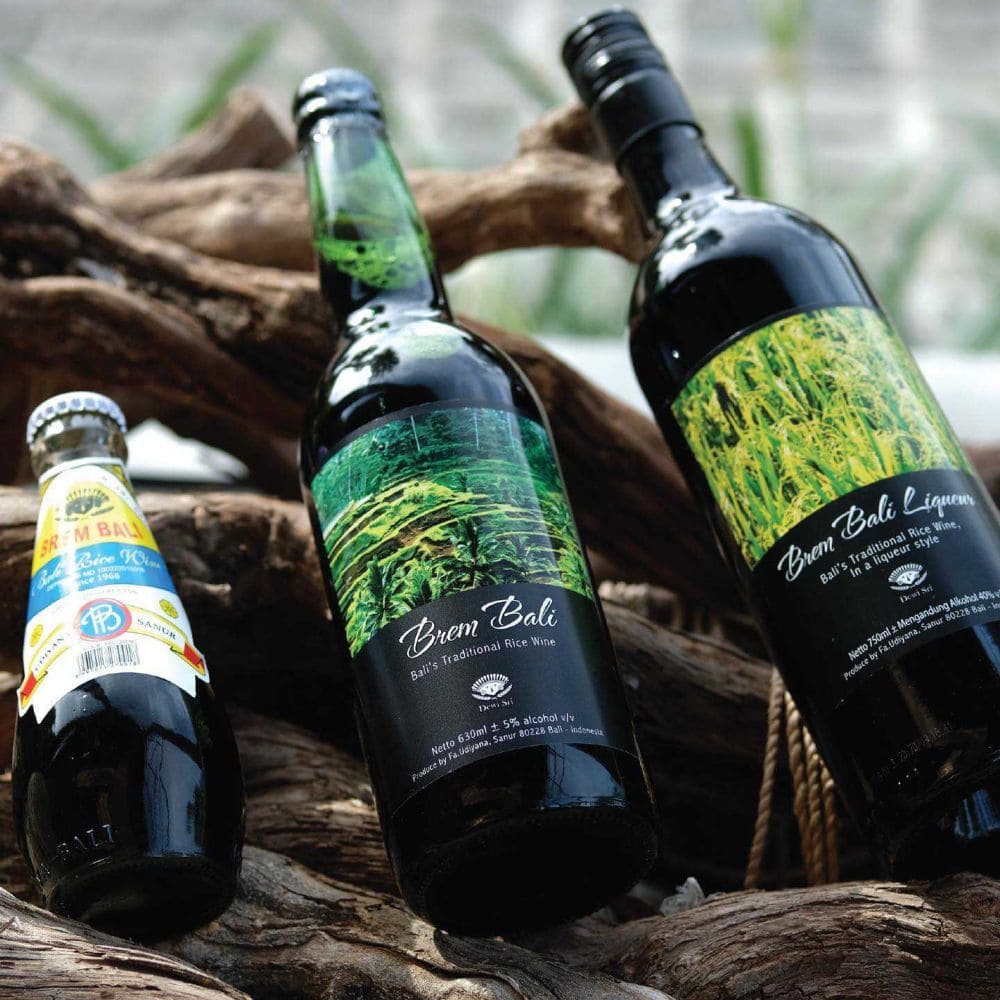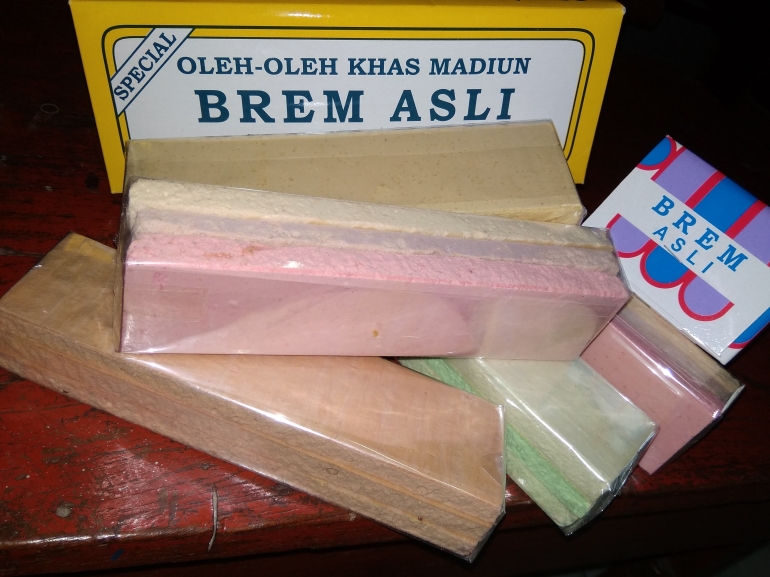Brem, a fermented wine made from glutinous rice, is more than just an alcoholic beverage in Bali; it holds a vital place in traditional Balinese rituals and ceremonies.
Known for its distinctive sweet and slightly sour flavor, it's a deep-rooted cultural artifact and a symbol of Balinese heritage.
In this article we will touch on Brem's history, its traditional and contemporary uses, the production process, and its taste.

What is Brem?
Brem is a traditional Indonesian fermented beverage made from glutinous rice, originating from Bali and Java. The production process involves steaming the rice and mixing it with a specific mold that initiates fermentation. This transforms the rice into a sweet, slightly tangy drink with an alcohol content that typically ranges from 5% to 14%, depending on the fermentation duration. Brem comes in both liquid and solid forms, with the liquid version often enjoyed as a dessert wine. It is known for its distinctive flavor profile, which can range from mildly sweet to rich and complex.
History of Brem
Brem's origins date back over a millennium, with its roots tracing to Java around the year 1000. Ancient Javanese inscriptions and literature offer evidence of the early existence of fermented beverages.
While initially emerging in Java, Brem gradually spread to other regions of Indonesia, including Bali. Over centuries, Brem has become deeply entwined with Balinese culture, particularly in Hindu religious practices.
Brem varies regionally in Indonesia. In Bali, it is a liquid made from black and white glutinous rice, while in Madiun and Wonogiri, it appears as a solid snack.
Brem in Bali
In Bali, Brem holds significant cultural and ceremonial value. It is prominently featured in Hindu rituals, such as the Tetabuhan ceremony, where it is offered to a giant figure in Balinese mythology - Bhuta Kala - to restore harmony and balance.
The red color of Brem, derived from black glutinous rice, enhances the symbolic meaning: Brem is used as a substitute for blood in ceremonies, symbolizing life and purity.
Brem's role in Bali has extended beyond traditional ceremonies. It is now widely used as a welcome drink and is increasingly known as a unique souvenir from Bali. Its international appeal has led to a rise in small-scale industries in Bali, turning Brem into a significant business opportunity.
Brem Beyond Bali
While Brem is most famously associated with Bali, it is also produced in other parts of Indonesia, such as Madiun and Wonogiri, where it is made into a solid snack known as Brem cake.

Despite regional variations, the liquid form of Brem from Bali remains the most renowned and widely consumed, both locally and internationally.
How Brem is Made
The production of Brem is a meticulous process involving the fermentation of glutinous rice. To create liquid Brem, black and white glutinous rice (known as ketan) are soaked, steamed, and cooled.
The cooled rice is then mixed with a dry starter called Ragi tape, which initiates the conversion of rice starch into sugar.
After a few days, yeast is introduced to begin the alcoholic fermentation, which lasts about two weeks.
The outcome is a honey-like syrup that turns overtime into Brem, with an alcohol content ranging from 3% to 10%.
Variations in Brem production, such as using toasted rice koji, can result in a richer, more intense flavor. The length of fermentation further affects the strength and complexity of the taste.
The Taste of Brem
Brem offers a delightful balance of sweetness and sourness, complemented by a subtle bitterness that adds depth to its flavor profile.
It is often likened to vermouth, thanks to its rich and unique taste, making it a suitable choice for a pre-dinner drink.
Whether enjoyed at room temperature or chilled with ice cubes, Brem provides a refreshing alternative to stronger Balinese spirits like arak.
With its relatively low alcohol content, Brem appeals to a broad audience, from those preferring a mild drink to enthusiasts of traditional alcoholic beverages.
Health Benefits of Brem
Especially in its solid form - that of a cake made in Madiun and Wonogiri - Brem, is believed to offer health benefits. It is thought to stimulate the circulatory system and may help prevent dermatitis due to the presence of B vitamins.
Brem is also recognized for its probiotic properties. As a fermented product, it can benefit gut health, aiding conditions like irritable bowel syndrome, constipation, and flatulence.
Additionally, Brem might help lower blood cholesterol, reduce hypertension, and offer defenses against certain allergies and intestinal inflammations.
This makes Brem not only a cultural product but also one with potential health advantages.
Conclusion
Brem is much more than a traditional beverage; it embodies Balinese culture and tradition. From its ancient beginnings in Java to its essential role in Hindu ceremonies, Brem has evolved into a cherished drink that captivates both locals and visitors.
You can add one right now!